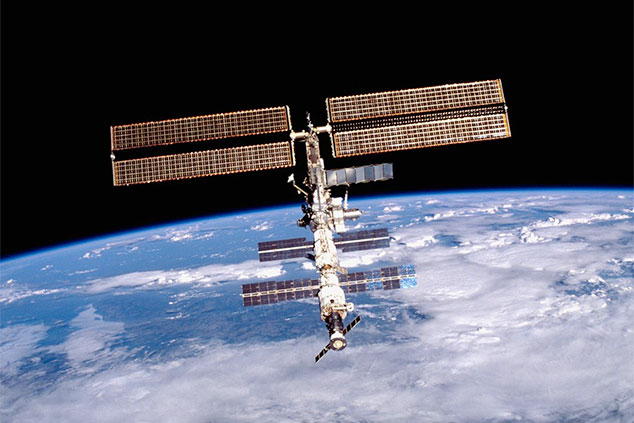
But should we really be surprised so many people are willing to risk their lives to say they have stood at the top of the world? What makes others hang from cliffs, dangle from skyscrapers or pop out of the head of the 38-metre-tall Christ the Redeemer statue in Rio de Janeiro, itself perched on top of a mountain? Is it the drive to go “faster, higher, stronger”, as the Olympic motto puts it? Is it for the sheer rush of adrenaline? Or is it a drive to grab the most followers on Instagram?
Maybe it’s a combination of all three, but the last is surely the most recent. Collecting followers on Instagram has become a kind of currency in the modern age. It has become an end in itself, where those who have the most are the richest in terms of “life worth” – a value that is reinforced by the number of followers someone has. After all, why else should so many people choose to follow you if not because you have gone the fastest or the highest, or you are the strongest. People today don’t so much as document their lives on social media as live their lives through it.
Humans crave a good story
Stories are everything to us as a species. As Yuval Noah Harari writes in Sapiens, “There are no gods in the universe, no nations, no money, no human rights, no laws and no justice outside the common imagination of human beings”. Instagram is just the easiest, most accessible way to leave our mark in that “common imagination” in an age where the internet can sometimes feel like the collective consciousness of humanity. You’re not online? You don’t exist. You haven’t Instagrammed your travels? You haven’t travelled – at least not in the way that is going to be remembered in the “common imagination”. “I once stood on the Great Wall of China and there was no one else around – just me”, our Instagrammer might say. “Don’t believe me? Go check my Instagram wall.” (Full disclaimer: there were lots of people around – just not for the split second the picture was taken.)
There’s no shame in being caught in the deceit. On the contrary. That’s why Instagram offers filters to make the sky in your photos bluer and the grass greener. So what if it’s not a reflection of reality as you see it? It’s my reality as I choose to have it remembered in the “common imagination” – the collective consciousness of the internet where our memories might, just might be recorded forever. (And if everyone is doing it, can it really be called deceit?) But as much as we subscribe to the “common imagination”, we crave individuality. How else are you going to stand out and be remembered if you weren’t the fastest, highest, strongest? Living life on the edge – literally. We have to have visited the remotest villages, swum in the farthest seas, and climbed the highest mountains – which takes us to the back of the queue of climbers waiting to plant their flag at the top of the world.
The danger of “overtoursim”
That would not be possible, of course, if it weren’t for advances in technology. Advances that have made flying more affordable or cruise liners bigger, for example, forcing Venice to introduce a €3 tourist tax for day-trippers to ease the crush in St Mark’s Square. Those mountain climbers in the photograph have access to equipment Tenzing Norgay and Edmund Hillary could only dream of when they made the first ascent of Everest in 1953. While the roughly $65,000 it costs today to reach the summit is a lot of money, it’s not such a vast figure as to be unattainable by many thousands of people. Whether it’s climbing Mount Everest, or just setting out to snap St Mark’s Basilica (when no one else is in shot), it all boils down to the trend towards “overtourism”.
When Everest just isn’t high enough
Last week, Nasa turned hotelier when it announced plans to charge guests $35,000 a night to stay aboard the International Space Station (ISS) from next year. That price is just a grand cheaper than a night’s stay in the Mandarin Oriental New York’s 5000 Suite – only the tenth most expensive suite in the world, according to Lonely Planet. You still have to get to the ISS, mind you, which will probably cost in the region of $60m, says BBC News – what Elon Musk’s SpaceX and Boeing plan to charge Nasa to ferry astronauts to space from American soil for the first time since the Space Shuttles were retired in 2011.
Still, Nasa’s decision to lift its ban on space tourism essentially turns the ISS into an orbiting hotel. Just two astro-tourists will be permitted to sojourn in space for up to 30 days at a time, so the queue to take a selfie from the ISS’s cupola window with the Earth turning slowly in the background will at least be mercifully short. But just as the ascent to the top of the world started with just two visitors in 1953, no doubt there will be hundreds of thousands of tourists vying to be on top of the world decades from now in some orbiting hotel. We may not even have to wait decades. Last year, Frank Bunger, the founder of private business Orion Span, unveiled plans to welcome his first guests to the “first-ever affordable luxury space hotel”, the Aurora Station, by 2022. A 12-day stay was expected to cost from $9.5m – presumably on full board. And then what? Trips to the moon? To Mars? To paraphrase Neil Armstrong’s words uttered 50 years ago next month, Nasa’s decision is one small step for a tourist, one giant leap for mass tourism.